Fractions
Teaching fractions using the Singapore maths method
Many children (and adults for that matter) find fractions difficult to understand. This is often because fraction notation (writing a fraction as a number, e.g. 1⁄2) is very confusing. Children therefore struggle to relate the symbol to the ‘thing’ and end up guessing. In Singapore, the understanding of fractions is rooted in the Concrete, Pictorial, Abstract (CPA) model, where children use paper squares and strips to learn the link between the concrete and the abstract.
At the heart of understanding fractions is the ability to understand that we’re giving an equal part a name. It is simply a naming activity! Taken from the Maths — No Problem! Primary Maths Series Textbooks, here are 4 easy steps that will develop and ensure children’s understanding of fractions.
Teach fractions for mastery
See how maths mastery helps every learner develop problem-solving skills using forward-thinking teaching techniques and step-by-step teaching support.
Request School Demo1. Finding equal parts
Children need to understand what a fraction is. When we divide a whole into equal parts we create fractions. A fraction is just an equal part.
In this lesson, children are encouraged to create 4 equal parts.
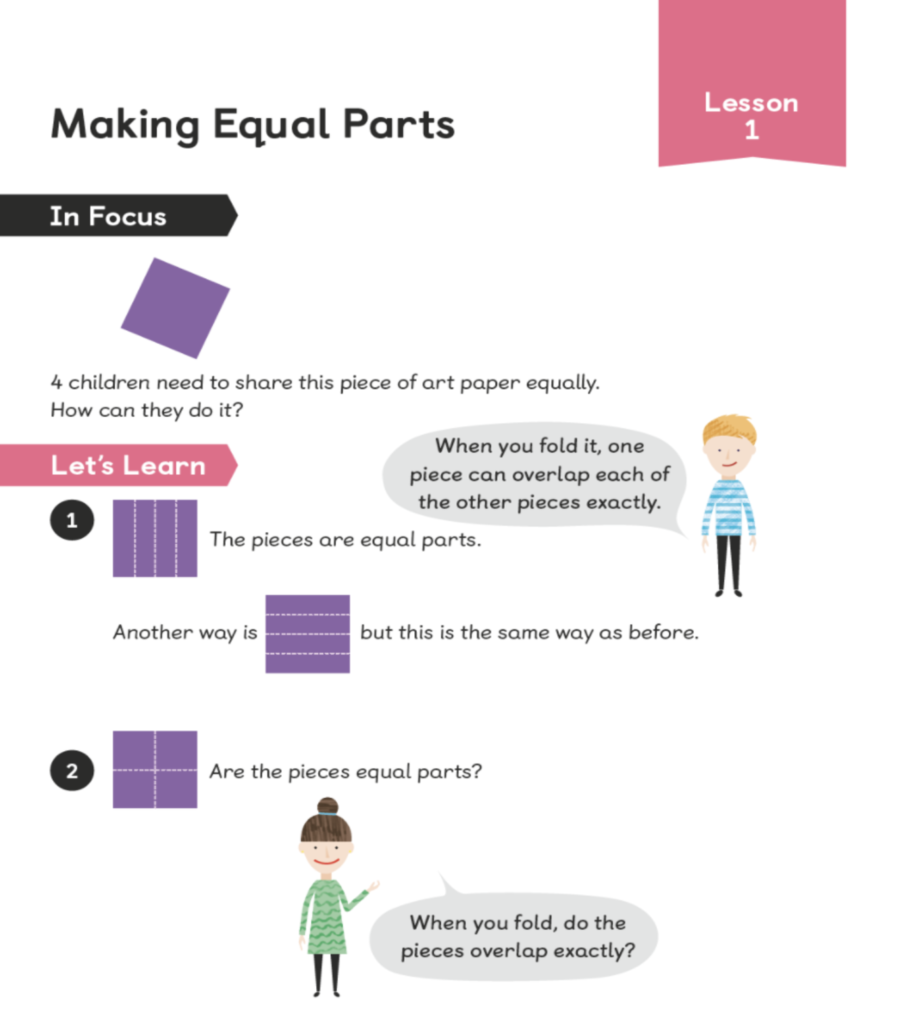
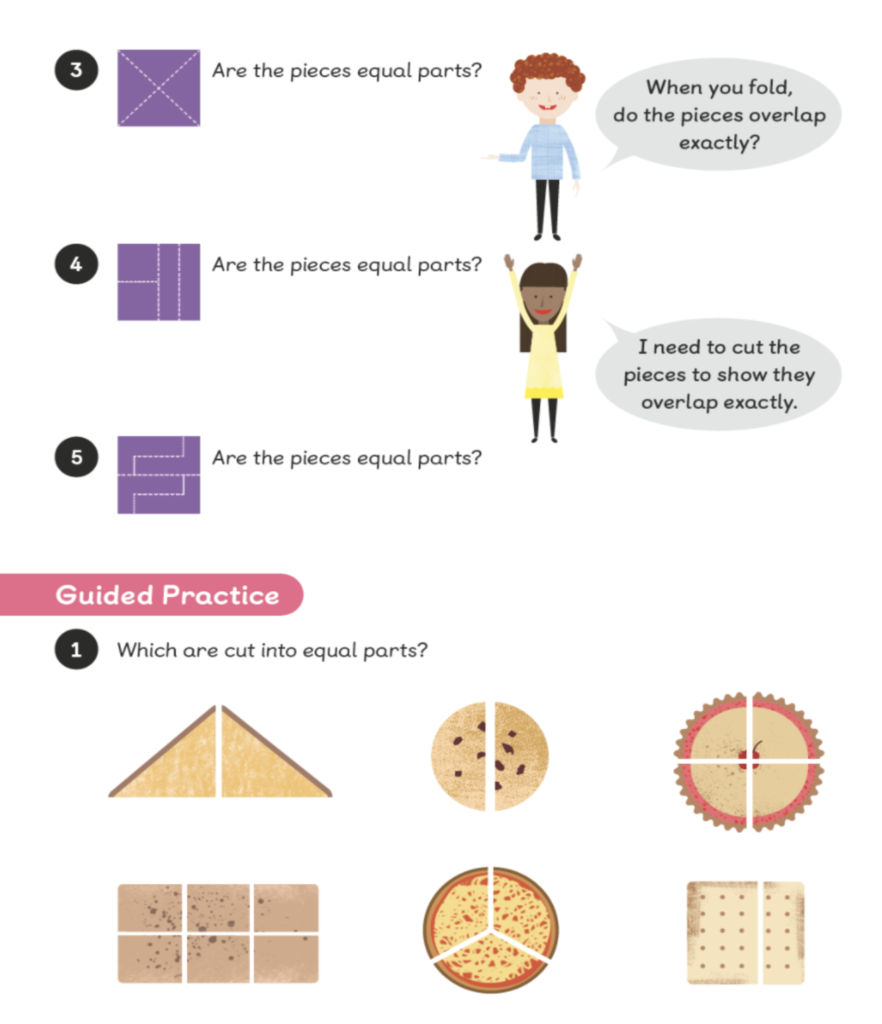
Reference: Maths — No Problem! Primary Maths Series, Textbook 2B, pages 102–103
Tip: Ask the children to also show you 4 unequal parts (if haven’t done it already!).
2. Naming equal parts
Once the children can make/identify equal parts (fractions), they need to give them a name.
In this lesson, children cut a pizza into a different number of equal parts. To show that the equal parts are different, the children give them different names. This is the denominator (name).
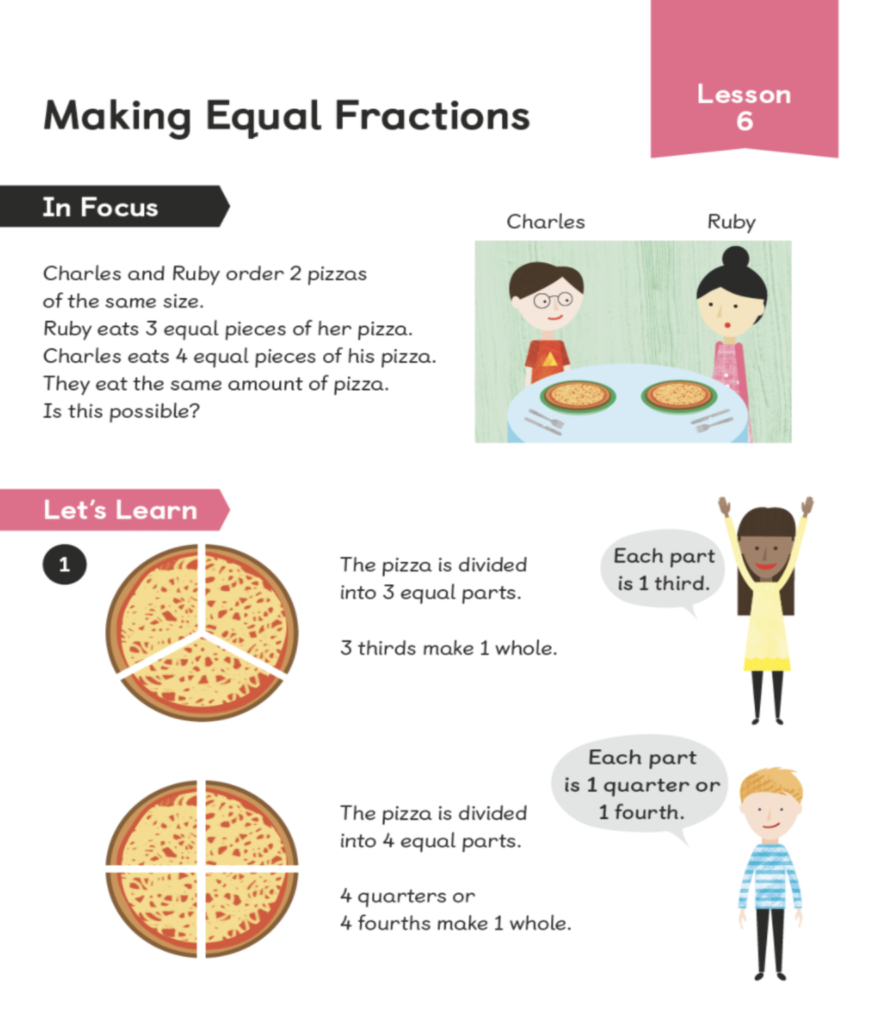
Reference: Maths — No Problem! Primary Maths Series, Textbook 2B, page 116
Tip: Call the denominator the ‘namer’ to start with. Write out the denominator as a word as well as a number.
3. Operations involving equal parts
If children can name a fraction, they are ready to do calculations using like fractions (they have the same name).
In this lesson, children can use strips of paper to model the problem and see how it links to the written and symbolic notation.
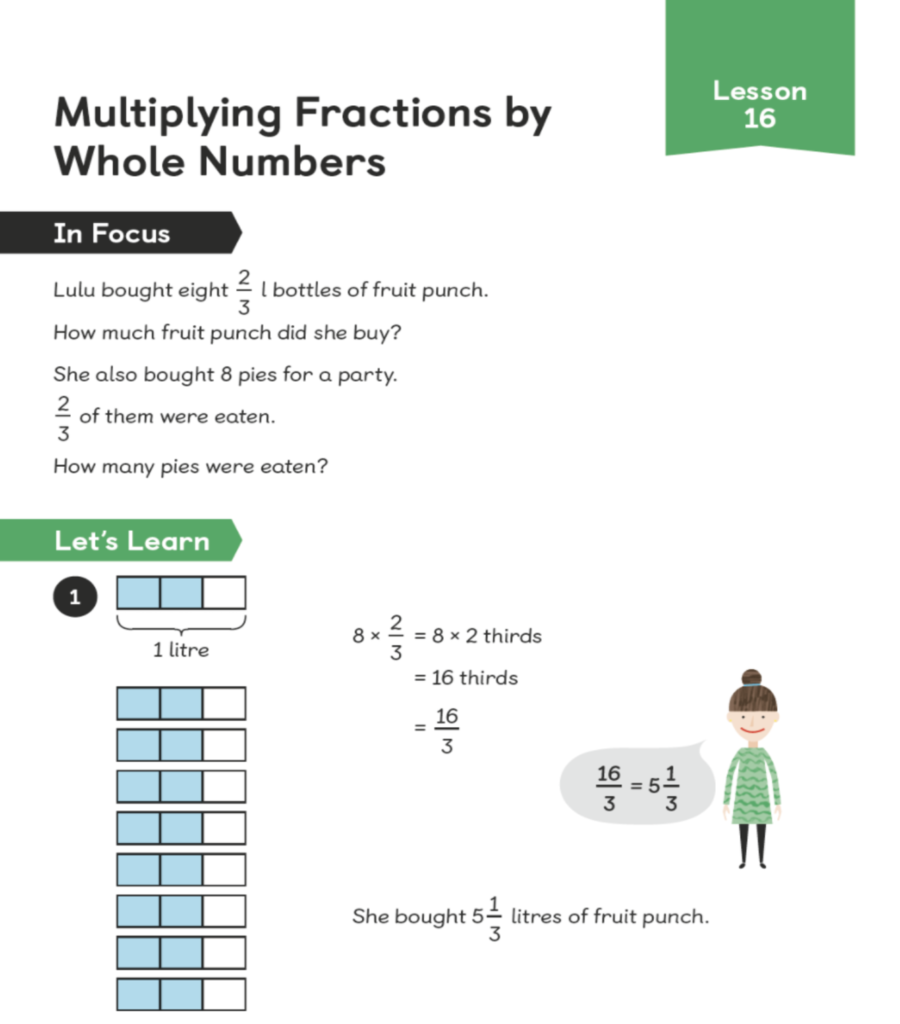
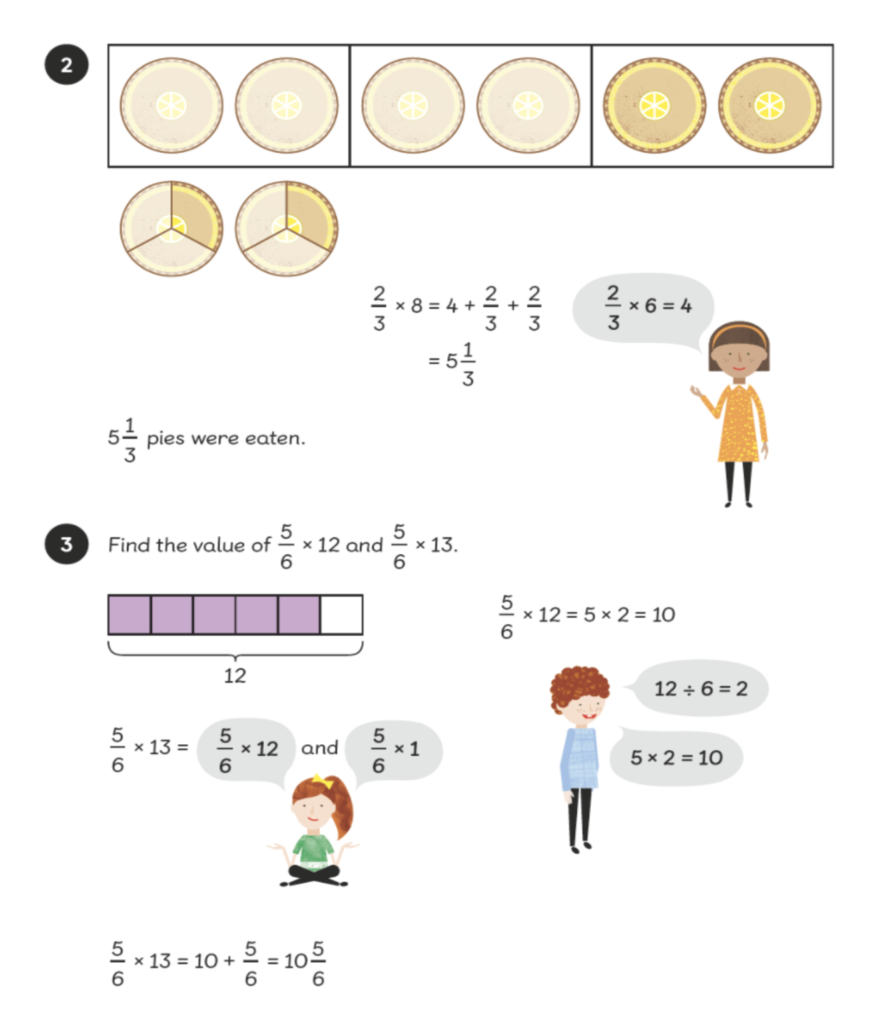
Reference: Maths — No Problem! Primary Maths Series, Textbook 5A, page 275 – 276
Tip: Prepare 3 apples (or any other item). Show the items to the children and ask them what is 2 apples + 1 apple? Now show them 3 equal pieces of paper. Write a ‘quarter’ on each. Then ask the children what is 2 quarters + 1 quarter? Is this any harder than adding apples?
4. What if the parts aren’t equal?
Can we add 3 apples and 2 oranges? Is it 5 apples? Is it 5 oranges? It is neither because we cannot add things with different names. We have to give them the same name, and in this case we could rename them as ‘fruit’. They now all have the same name and so we can do the calculation (5 pieces of fruits). The same is true for fractions. We can’t add 2 quarters and 1 eighth because they have different names, however, if we can give them the same name (equivalent) it is possible.
In this lesson, children cut up a quarter to show more equal parts and name the parts.
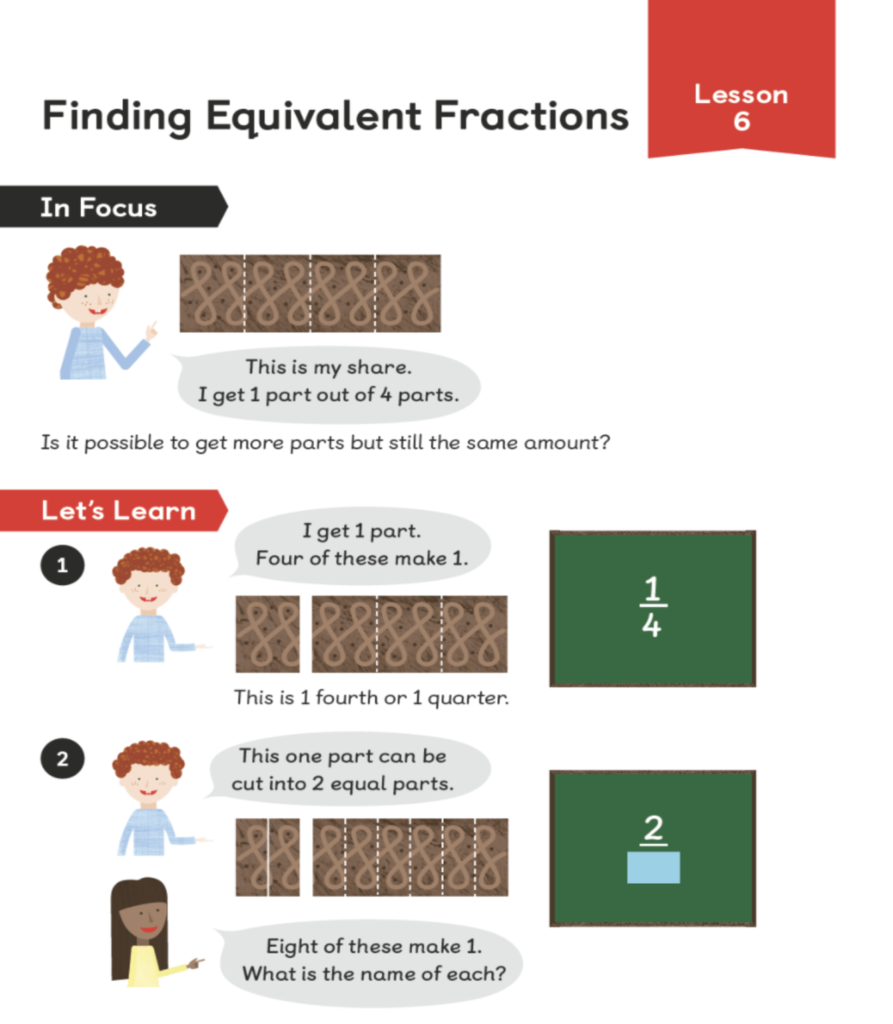
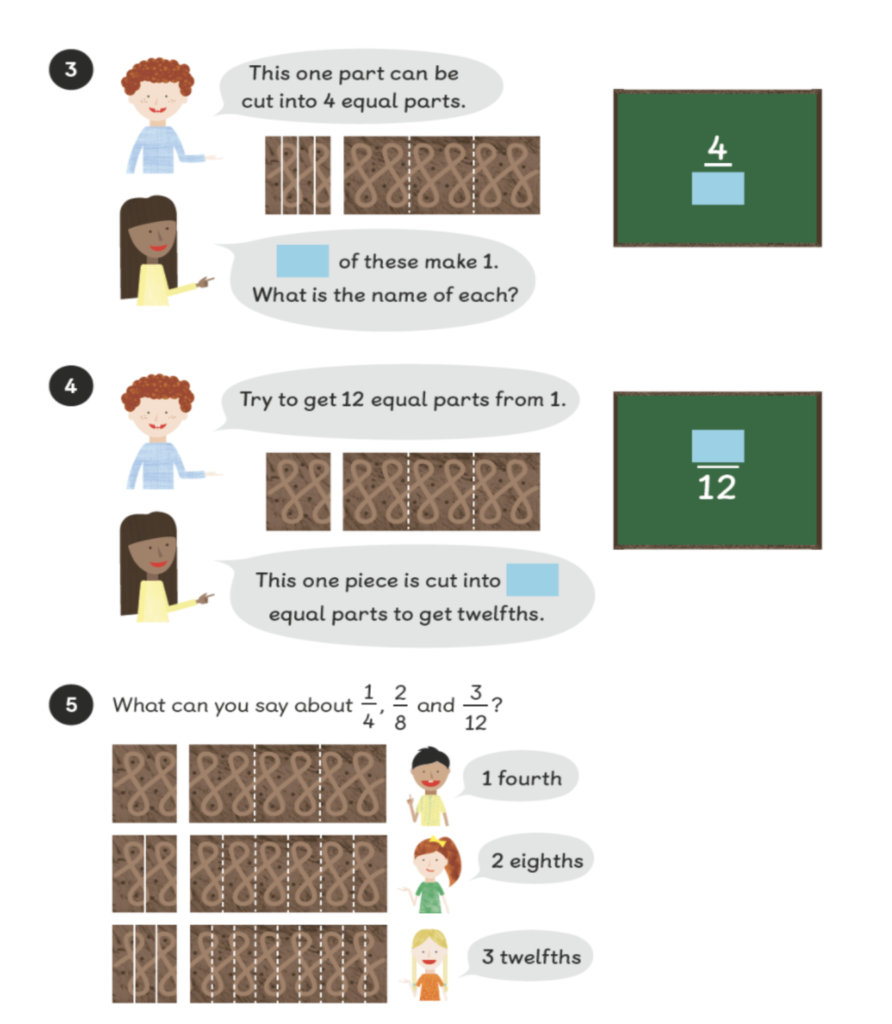
Reference: Maths — No Problem! Primary Maths Series, Textbook 3B, pages 128–129
Tip: Ask the children to shade in their piece.
Fractions for Mastery CPD
Would you like to gain confidence with fractions? This advanced, one-day course will give you the boost you need. Learn from one of our friendly experts in a relaxed, face-to-face setting.
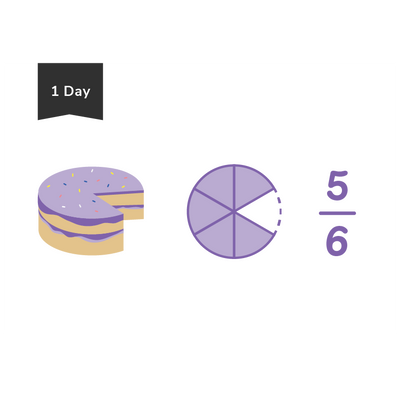
Request a free demo
Teach the way you wish you were taught. Maths — No Problem! award-winning textbooks and workbooks, step-by-step teacher guides, and online CPD videos are everything you need to further your practice.
Request School Demo